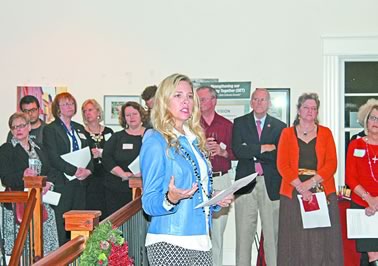 A national program that’s spurred leaders and stakeholders in communities throughout Southside Virginia to band together and create partnerships is bearing fruit.
A national program that’s spurred leaders and stakeholders in communities throughout Southside Virginia to band together and create partnerships is bearing fruit.
Virginia’s Growth Alliance, a regional economic development organization that includes six counties (Mecklenburg, Brunswick, Lunenburg, Greensville, Charlotte and Nottoway) and one city (Emporia), held a community event in December at Rosemont Vineyards and Winery to introduce its new executive director and talk about the Stronger Economies Together (SET) strategic plan leaders from across the region have developed.
Virginia’s Growth Alliance Vice Chair and Brunswick County Administrator Charlette Woolridge welcomed attendees and introduced Jeff Reed as the organization’s second executive director.
Woolridge said Reed started on Oct. 1 with 20 years of economic development and marketing experience at localities including Danville and Halifax County.
“I keep saying, I’m learning Southside in 30-mile increments,” said Reed. “From Danville to South Boston, and now I’m actually living in Clarksville and have the entire region from Mecklenburg to Greensville and from the Prince Edward County line to the state line. I’m just thrilled to be here and working with all these wonderful people and all the exciting things that are going on.”
Scott Tate, a Virginia Cooperative Extension agent who facilitated many of the strategic planning workshops for Virginia’s Growth Alliance, said Stronger Economies Together is a national program organized and funded through the U.S. Department of Agriculture.
Tate said the program went through 15 other states before coming to Virginia. He said Southside Virginia was one of two regions in the state that was funded through the SET program, which is being sponsored in Virginia through multiple agencies, including Virginia Cooperative Extension, Virginia Tourism Corporation, Virginia Department of Housing and Community Development, USDA Rural Development, Virginia Economic Development Partnership and the Virginia Tobacco Indemnification and Community Revitalization Commission.
“The state group said, ‘This region is serious about working together; this is a new region that’s really trying to figure out its identity and where it wants to go economically, so this program makes sense,’” Tate said, noting that strategic plans are formed using a broad cross-section of stakeholders from throughout the region over a 10-month period using data and trends.
by Patrick Love, South Hill Enterprise
